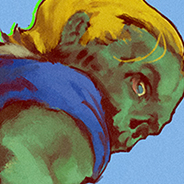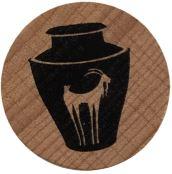After sliding the oversized lid off the oversized box, I'm staring down into echoing expansion space. I can almost feel the hand reaching out to fawn and grasp at my wallet. Among the card and plastic figures, though, I'm looking for something: the baggie of character cards. When I pull it out and sort through the contents, my heart sinks.
All through Tolkien's work, there are open ends. From the heroic struggle against Morgoth in the first age to the thirteen pages of sequel he wrote in the fourth, there is space galore. Yet here is a bastardized mix of old and new faces from the War of the Ring. It feels wrong for Aragorn to go questing with Beravor and other faceless FFG creations. It feels worse that he can do so with Bilbo, who he didn't meet until the latter retired to Rivendell, or Gimli who was a stranger to both of them until the council of Elrond. In all the long ages of Middle-Earth, Journeys chooses the most detailed, most loved narrative, and derails it.
In the end, I choose Gimli and Legolas and pretend my adventure is a continuation of that abortive sequel, The New Shadow. It's the only place I can find a chink anywhere in the Legendarium. Setup is easy enough with the quick start rules. Next, I choose a class for each character - Gimli is a Guardian, Legolas is a Hunter - none of which make much sense within Tolkien's work either. There is a set of cards associated with each character and with each class which combine to form a starting deck: there's clearly a lot of possible combinations. Then I download the app, and my campaign is underway.
As a veteran of FFG app-driven board games, I'm instantly at home. I start punching out the hex tiles, fitting them together, and adding tokens to explore. I'm very, very thankful that the board pieces are chunky and have their codes printed in big, easy to see numbers. As the pieces form a map, a little excitement begins to stir, wondering what the Search and Threat chits are hiding. There's an epic feel for such a tiny collection of tokens.
On a turn, a hero can take two actions from a simple menu: move, attack or interact with a token. At the start of their turn, they pick some off the top of their card deck and choose one to ready, which they can later use for the printed effect. The remainder gets distributed between the top and bottom of the deck, as you choose.
The reason you care is that most cards have an icon on them, either a star or a leaf. To do anything in the game you have to pass a test against a stat. This involves drawing cards equal to its value and looking for star icons: each is a success. You can turn leaves into successes by spending inspiration, a limited and valuable resource. Inevitably the cards with success icons are the ones with the best text effect. A simple system which hides a surprising amount of interest.
My first successful test is a conversation with a stranger. I can be polite or threatening, or something between. It feels like a chance to role-play, so I do.
After two turns, I'm loving the card system. I am pulled across the map to explore and reduce the accumulating "threat" value that could lose me the scenario. But there's so much else to do, and so much to balance in the card effects and successes. I'm already getting resentful of having to waste time looking for new tiles to add, no matter how clear the numbers. Not to mention reading the flavourless flavour text that pops up with each new encounter. I want to get on working those interesting mechanical levers.
Journeys in Middle Earth is a clear evolution of several FFG product lines. Some of the best bits of Descent and Mansions of Madness and the Arkham Horror Card game have been creamed off and blended together. It's not quite greater than the sum of its parts. But it's more engaging than any of the games that have come before it.
As I begin to give up on any sense of Middle-Earth at all, I get a glimmer of hope. I'm sent to the towering stack of cards to find a "title". A quick shuffle reveals that some are from the stories, like "Barrel-Rider", each with an effect related to the title. Mine is "Mist-Walker". There's a swelling sense that my sequel might be worth writing after all.
The scenario ends in a spectacular oddity: Gimli has to play the sneak. Legolas fails his decent Wit score twice, so it's down to the clumsy Dwarf. Against the odds, he manages it, because I have a card readied that gives me a bonus to Wit tests. It's an appropriately tense end to a game that's mounted from zero to solid engagement along the way.
So I keep playing.
After my first scenario, I can spend experience on more cards. None of the ones I can afford offer any more success icons, so I don't bother. But part of me is itching to accumulate more xp and get customising my decks. The second scenario jettisons the hex map in favour of two solid battle boards. I had no idea what these were for when I unpacked the game, and when I find out, I'm impressed. Not only do I not need to go hunting for numbers anymore but the mechanics morph seamlessly into a tactical battle. The boards are a set of spaces that fit together, onto which you place scenery tokens like walls and bushes.
There are rules for these, and reference cards, which I now have to learn. I wish that instead of cards there was a single reference sheet. The full rules compendium is quite thick, given how easy the game has been so far. I am both excited and fearful of what is waiting in the future. But to the battle. That card engine works wonders with the scenery, in a tense face-off with an orc boss. There are various tactical trade off's as I try and make it across the map to close a portcullis that's spewing out enemies. But I lose the final battle due to pure luck. It seems a good balance.
The campaign narrative picks off with me pursuing the orc, and I wonder what branch it might have taken if I'd won.
It's back to the hex tiles again, and I hate them already. There's no way I want expansions adding more of them to the game than there already are. But as I reach the end of my tether, there's a surprise. They double as dungeon tiles, meaning the action can span both underground and overground as part of the same scenario. A small innovation but it pushes my reluctant brain a smidgen deeper into Middle-Earth.
Yet the game seems determined to ruin every step it takes into fantasy land. The app sends me to the bag to look for a new enemy type, a Barrow Wight. There is a wonderful moment of anticipation as I rummage for the figure. Then I realise this mysterious, ancient evil from the Barrow Downs, which so terrified both the Hobbits and teenage me, is nothing but numbers. It has nothing to threaten me with but some weak text paragraphs. Tot up the values, play the right cards, vanquish it back to the box. What a waste.
My final scenario is another battle board and another surprise. Rather than a fight, this is a deduction puzzle. Against the rising threat meter, I have to search for information and question suspects to root out a spy. I'm always a little suspicious of apps in board games: I've spent as much time staring at a screen as working the board. But here's a case where the interface between the two worlds works perfectly. No designer could have set this puzzle with card and plastic alone. No computer player could have the pleasure of trying to figure it out with their friends.
Through all four sessions, the thrill of novelty alongside the fascination of tactics has pulled me on. After that high point, it seems a fitting time to slide the lid back on the box. It's been a fun enough ride, time well spent. And there's some clever design work to admire. But as I gaze again at Aragorn, Legolas, and Gimli fighting orcs against hope in Fangorn Forest, it's hard not to feel a sense of loss. That picture, those names, promise me adventures anew with the most beloved of old friends. But while I got my great adventures, it was alongside nothing but the palest of wraiths.
 Games
Games How to resolve AdBlock issue?
How to resolve AdBlock issue? 

























